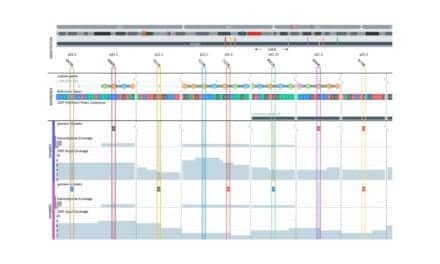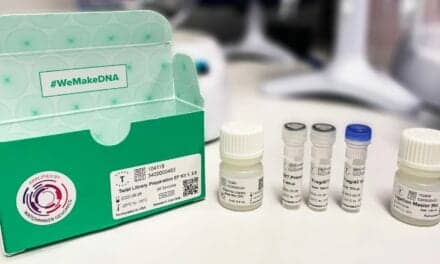This is a companion article to the feature, “Immunoassay Analyzers Improve Service and Quality.”
Molecular diagnostics involve the detection and amplification of nucleic acids, such as RNA, while immunoassay testing is centered on immune system responses to antibodies and antigens.
“At Rheonix, our primary focus is on molecular diagnostics development rather than immunoassay development,” says Steve Pemberton, vice president of marketing and sales at Rheonix, Syracuse, NY. “However, we realized the need to generate both types of tests. This would allow us to determine whether the infectious disease target was present, and if there was a gap in understanding the immune system’s response to the organism.
“To gain these unique insights, we sought to incorporate detection of antibodies to the infection using existing immunoassay technologies,” says Pemberton. “Teams at Rheonix and the New York University College of Dentistry have completed development and testing of a microfluidic system and assay to simultaneously detect host anti-HIV antibodies and viral RNA in a single specimen.”

Using the Rheonix CARD and Encompass Optimum automated platform, teams at Rheonix and the New York University College of Dentistry have developed a microfluidic system and assay to detect host anti-HIV antibodies and viral RNA simultaneously in a single specimen.
Rheonix has been granted a patent for its chemistry and reagent device (CARD) cartridge, which enables molecular assays to be performed on the company’s EncompassMDx and Encompass Optimum instruments. Designed with cost-savings and functionality in mind, the company’s CARD permits all assay steps to be performed within a fully enclosed cartridge, thus eliminating the potential for contamination, reducing user error, and streamlining workflow.
The dual-layer design of the Rheonix CARD automatically manipulates reagents internally by using an active network of fluidic pumps, valves, and channels. The upper surface of the device contains reservoirs that hold reagents used in the extraction, purification, amplification, and detection processes, and store any resulting liquid waste. The channels and pumps located on the lower surface of the device are used to transport and mix reagents, and to move waste into the reservoirs on the top surface. By actively pumping fluids from reservoir to reservoir within the CARD, molecular diagnostic tests can be performed automatically.
Developed for use by laboratories of all types, from small community hospital labs to centralized high-complexity laboratories, the device is suited for a range of applications, including sample preparation for next-generation sequencing, research-use-only testing, and in vitro diagnostic applications.





